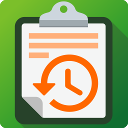How to Turn on Windows Clipboard History
Do you find yourself constantly needing your clipboard history?
Most windows devices have a built-in clipboard manager, which will expose your recent clipboard history.
MacOsx, Linux, and most other operating systems do not have a clipboard history, nor a clipboard manager you can take right out of the box. But Windows is able to track some of your recent items, and retrieve your clipboard history.
In this article, we’ll cover how to turn on your clipboard history, how to access it, and what the possible limitations are.
TL;DR: ⊞Windows Key + V is the trick
- Go into your settings: ms-settings:clipboard?activationSource=SMC-IA-4028529 is a direct link, but you can also search through your settings for clipboard history
- ⊞ Win + V: This will show your clipboard history
- Limitations: this is limited to 25 items, supports up to 4MBs, no long-term storage or synchronization
Turning on Windows Clipboard History
The Windows clipboard history comes with every modern Windows device. However, sometimes they are not on when you will receive your computer. For your history to be captured, this must be on. Since your clipboard history can retain certain sensitive information, such as emails, passwords, and more, Windows needs your explicit permission to capture your clipboard history.
The best way to turn this on would be by going to:
- Settings
- System
- Scroll down to Clipboard
- Turn clipboard history on
If you are a developer and like taking quicker steps, then perhaps you may want to use:
- ⊞ Win + R to open up the Run Diologue
- Paste the following: ms-settings:clipboard?activationSource=SMC-IA-4028529
This will take you right to the clipboard setting, where you can turn it on.
Seeing Your Clipboard Manager
After you have the clipboard manager enabled, click ⊞ Win + V to open up the clipboard. From there, you will be able to see your last 25 items. This should include:
- Basic text
- Small images
- An option to clear the history
Congratulations, you are a clipboard manager pro now!
If you ever want to turn this off, go back to your settings. You can also do some cross-device synchronization (note, this is tied to your Microsoft account).
Limitations
The best part about the Windows Clipboard Manager is that it is free. And who doesn’t like free?
The issue is, most companies don’t care about their clipboard managers nor clipboard power users. We wrote about the history of clipboard and computing, but the industry has been at a stand-still since the Apple Lisa came out in 1983.
The big limitations of the Windows Clipboard Manager are:
- No more than 25 items
- Poor synchronization
- Synchronization is tied to a Microsoft Account
- No data over 4MBs
- No long term storage
- No search capabilities
- No organization, tagging, etc
- No extensibility like text expansion
- Basic user interface
This is why we built Clipboard History Pro for Edge and Chrome. Some of our core features include:
- Unlimited items
- Synchronization across any device (including Mobile!)
- Unlimited data
- Long term storage
- Search, organization, tagging
- Built in free text expander
- Beautiful (we hope!) user interface
We have a generous free plan, and if you wish to support us you can get certain perks like unlimited text expansion, free mobile synchronization, and more.
We wrote about some more alternatives, which you can check out. However, Clipboard History Pro has the most users, best free plan, and active support behind it.
